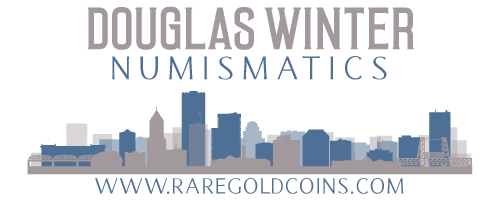The Single Greatest Indian Head Eagle in Existence
/There has never been an Indian Head eagle which has shattered the $1 million dollar mark. This is soon going to change, though, when Heritage sells Dr. Steven Duckor’s incredible 1920-S eagle in their March 2007 National Money Show auction in Charlotte, North Carolina. I fully expect this coin to break all previous price records for an example of this design type. If you were to ask five experts in 20th century US gold coinage the question “what is the single greatest Indian Head eagle in existence,” I’m reasonably certain that the answer would be unanimous: The Duckor 1920-S eagle which has been graded MS67 by PCGS.
This coin is very important for at least two significant reasons: it is very possibly the finest known Indian Head eagle of any date (it was graded MS67 by PCGS many years ago and by today’s standards I would think it had a pretty decent shot to upgrade to MS68) AND it just so happens to be the rarest date in the series in Gem Uncirculated. I can not think of many other situations in which a finest known single coin also happens to be a rarity as well.
In 2005 I first had the pleasure of viewing this coin in person. I was doing some other business with Steve Duckor and he asked me if I’d like to view his coin collection. There were a lot of memorable coins in his sets but I think the one that stuck with me most was the 1920-S Eagle. And I could tell that this coin held a special place in Steve’s heart as well.
This coin was first sold by dealer Jerry Cohen to another dealer, Dennis Forgue, in 1968 for $3,500. It was placed in the collection of Dr. William Blackwell until the Stack’s June 1979 auction where Dr. Steven Duckor purchased it for $85,000; an enormous amount of money at the time for an Indian Head eagle. After remaining in Dr. Duckor’s collection for over a quarter of a century, it will be sold on March 16, 2007 as Lot 2134 in the Heritage auction.
I can personally think of at least three or four serious collectors who are going to really want to add the Duckor 1920-S eagle to their collection. This should create a level of competitive bidding that leads to a world-record price for the date and for the entire denomination.
Given the fact that the outstanding MS66 1920-S eagle in the Kutasi collection was recently sold by Heritage for a record price of $402,500, I think it’s pretty safe to say that the Duckor coin is going to bring considerable more; maybe even three times as much.
I’m personally very excited to witness the sale of this coin in Charlotte on the night of March 16th. Its going to be a great piece of Numismatic Drama and yet another feather in the cap of Dr. Steve Duckor; a personal friend and one of the greatest collectors I have ever known.










